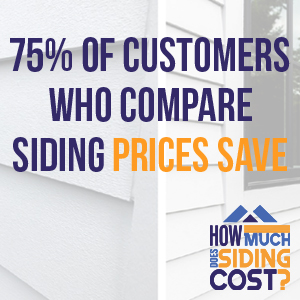
5 Signs It’s Time to Replace Your Home’s Siding
The siding of your home is not just about aesthetic appeal; it plays a crucial role in protecting your home from the elements and insulating it from external temperatures. However, over time, siding can wear out and lose its effectiveness. Understanding when it’s time to replace your siding is essential for maintaining your home’s integrity and value. Here are five signs that indicate your home’s siding needs replacement.
1. Warping or Buckling
One of the most obvious signs that your siding needs attention is warping or buckling. If you notice your siding panels are not laying flat against your home and seem to be warped or bulging, it’s a clear indicator of underlying issues. Warping can be caused by prolonged exposure to moisture or improper installation. It’s important to address this issue promptly to prevent further damage.
2. Cracking, Chipping, or Breaking
Siding is designed to be durable, but it’s not indestructible. Over time, exposure to harsh weather conditions can lead to cracking, chipping, or breaking. These damages not only diminish the aesthetic appeal of your home but also reduce the siding’s ability to protect your home from water infiltration and pests. Small cracks might be repairable, but widespread damage typically calls for a full replacement.
3. Fading and Frequent Painting
If you find yourself needing to repaint your siding more frequently than usual, it could be a sign of deterioration. High-quality siding should retain its color for several years. Fading is often a sign that the waterproofing and protective layers of the siding are no longer effective. Frequent painting is not only a hassle but also an added expense that can be avoided with new, more durable siding.
4. Increased Energy Bills and Comfort Issues
A less obvious sign that your siding needs replacing is a change in your indoor comfort and a rise in energy bills. Siding plays a key role in insulating your home. If it’s failing, you may notice that your home is less comfortable during extreme temperatures, and your heating and cooling costs may increase as your HVAC system works harder to compensate.
5. Mold, Mildew, or Fungus Growth
The presence of mold, mildew, or fungus on your siding, especially at the seams, can indicate that water is penetrating your siding and being held inside the wall. This is a serious concern as it can lead to structural damage and health issues. It’s essential to address water infiltration problems promptly to prevent extensive damage.

Assessing Your Siding: A Checklist
To determine if your siding needs replacement, conduct a thorough inspection of your home’s exterior. Look for the signs mentioned above and also pay attention to any loose or missing pieces, dry rot, or signs of insect or rodent infestations. It’s also wise to inspect your siding after major weather events, like storms or heavy winds.
Is Damaged Siding a Risk? Understanding the Implications
When it comes to home maintenance, the condition of your siding should never be overlooked. Damaged siding is not just a cosmetic issue – it poses several risks that can have far-reaching implications for your home. Here, we explore why damaged siding is a matter of concern and the potential risks it brings.
Compromised Structural Integrity
The primary role of siding is to protect the structural integrity of your home. It acts as a shield against external elements. When siding is damaged, this protective barrier is compromised, allowing moisture to seep into the walls. Over time, this can lead to the deterioration of the structural components of your home, such as the wooden framing, which can be costly to repair.
Water Damage and Mold Growth
One of the most significant risks associated with damaged siding is water infiltration. Cracks, gaps, or warping in the siding can allow water to enter the wall cavities. This moisture accumulation is a perfect breeding ground for mold and mildew, which not only damages the structure but can also pose health risks to the inhabitants, especially those with allergies or respiratory issues.
Decreased Energy Efficiency
Siding plays a critical role in the insulation of your home. Damaged or deteriorating siding can lead to drafts and air leaks, reducing your home’s energy efficiency. This means your heating and cooling systems have to work harder to maintain comfortable indoor temperatures, leading to higher energy bills.

Pest Infestations
Gaps or holes in your siding can also be an entry point for pests such as insects and rodents. Once inside, these pests can cause further damage and may even lead to infestations, which can be both difficult and expensive to eradicate.
Reduced Curb Appeal and Property Value
From an aesthetic standpoint, damaged siding can significantly detract from your home’s curb appeal. This not only affects your enjoyment of your property but can also have a negative impact on its market value. In the real estate market, the exterior appearance of a home is a key factor in attracting potential buyers.
Safety Hazards
In some cases, severely damaged siding can become a safety hazard. Loose or falling pieces of siding can pose risks to the inhabitants and visitors. Additionally, if the structural integrity of the home is compromised, it could lead to more serious safety concerns.
How to Address Damaged Siding
Given these risks, it’s important to address damaged siding promptly. Regular inspections can help identify issues early on, and repairs or replacements should be undertaken as needed. Upgrading to high-quality, durable siding materials can also reduce the frequency of repairs and offer better protection for your home.
Damaged siding is definitely a risk that homeowners should take seriously. It’s not just an issue of aesthetics – it affects the safety, structural integrity, and efficiency of your home. Timely repairs and considering an upgrade to more durable siding materials can mitigate these risks, ensuring that your home remains a safe, comfortable, and energy-efficient space for you and your family.

How to Carefully Select the Right Replacement Siding
Choosing the right replacement siding for your home is a decision that goes beyond aesthetics. It involves considering durability, maintenance, energy efficiency, and budget. Here’s a guide to help you navigate the process of selecting the perfect siding for your home.
Assess Your Needs and Preferences
Start by assessing what you need from your siding. Consider the climate in your area, your home’s architectural style, and how much maintenance you’re willing to undertake. Do you live in an area with extreme weather conditions? Are you looking for low-maintenance options? Answering these questions will guide your material choice.
Understand Different Siding Materials
There are several siding materials available, each with its own set of advantages:
- Vinyl Siding: It’s one of the most popular choices due to its low cost, minimal maintenance, and variety of styles and colors. It’s also durable and resists pests and rot.
- Fiber Cement Siding: Known for its strength and durability, fiber cement siding can mimic the look of wood, stucco, or masonry. It’s resistant to fire, pests, and water damage.
- Wood Siding: Offers a classic and timeless look. It’s eco-friendly but requires more maintenance to prevent rot, pests, and moisture damage.
- Metal Siding: Typically made from steel or aluminum, metal siding is durable, fire-resistant, and low-maintenance. It’s also good for energy efficiency.
- Composite Siding: Made from various materials, composite siding can offer the best qualities of wood, vinyl, and fiber cement, often being durable, energy-efficient, and low maintenance.

Consider Energy Efficiency
Energy efficiency is an important factor in siding selection. Insulated siding can significantly reduce energy bills by keeping your home cooler in summer and warmer in winter. Look for siding with good insulation properties, especially if energy efficiency is a priority for you.
Match the Siding to Your Home’s Style
The siding should complement the architectural style of your home. For instance, traditional homes may look best with wood or fiber cement siding, while contemporary homes might suit metal or vinyl siding. Consider the color, texture, and profile of the siding in relation to your home’s overall aesthetic.
Think About Maintenance and Longevity
Different materials require different levels of maintenance. Vinyl and metal sidings are low-maintenance, while wood siding requires regular painting or staining. Also, consider the longevity of the material. Some materials, like fiber cement or metal, have longer lifespans than others.
Budget Considerations
Budget is a crucial factor in the decision-making process. While it’s important to consider cost, it’s equally important to think about the value you’re getting in terms of durability, maintenance, and energy efficiency. Sometimes, spending a bit more upfront can save more in the long run through lower maintenance costs and energy savings.
Seek Professional Advice
Consult with siding installation professionals who can provide insights based on your specific situation. They can offer advice on the best materials for your climate and home style, and help you weigh the pros and cons of each option.
Choosing the right replacement siding involves balancing aesthetics, functionality, maintenance, and budget. By understanding your needs, researching different materials, considering energy efficiency, and seeking professional guidance, you can make an informed decision that enhances your home’s curb appeal, functionality, and value.

The Importance of Professional Installation for Your New Siding
Selecting the right replacement siding for your home is just the first step. Equally crucial is ensuring that it is installed correctly. Professional installation plays a pivotal role in maximizing the performance and longevity of your new siding. Here’s why professional installation is essential and what homeowners should consider during the installation process.
Ensuring Proper Installation
Siding installation is a complex process that requires precision and expertise. Professional installers have the necessary skills, experience, and tools to ensure that the siding is installed correctly. Proper installation is key to preventing issues like water infiltration, warping, and inefficient insulation.
Avoiding Common Installation Mistakes
DIY siding installation can lead to common mistakes such as improper nailing, incorrect overlapping, and inadequate sealing. These errors can compromise the siding’s effectiveness and lead to costly repairs down the line. Professionals are trained to avoid such pitfalls, ensuring a flawless installation.
Compliance with Warranty Requirements
Many siding materials come with manufacturer warranties that are contingent on proper installation. Professional installers are familiar with these requirements and ensure that the installation complies with the necessary standards to keep your warranty intact.
Advising on Ventilation and Insulation
Proper ventilation and insulation are crucial for the efficacy of your siding. Professionals can assess your home’s existing ventilation and insulation needs and make recommendations for improvements. This can enhance energy efficiency and prevent issues like mold and moisture buildup.
Time and Cost Efficiency
While it might seem cost-effective to attempt a DIY installation, it can often end up being more expensive in the long run due to potential errors and inefficiencies. Professional installers can complete the job more quickly and efficiently, saving you time and money.
Safety Considerations
Siding installation involves working at heights and handling heavy materials. Professional installers are trained in safety protocols to prevent accidents, ensuring a safe installation process.
Post-Installation Support
Many professional siding installers offer post-installation support and maintenance services. This can include follow-up inspections and advice on maintaining your new siding to ensure it lasts as long as possible.
Choosing the Right Professional
When selecting a professional installer, consider their experience, reputation, and the quality of their previous work. Ask for references, read reviews, and ensure they are licensed and insured. A reputable installer will also provide a clear estimate and contract, outlining the scope of the work, timeline, and costs involved.

Professional installation is a critical component of replacing your home’s siding. It ensures that the siding is installed safely, effectively, and in compliance with warranty requirements. By investing in professional installation, homeowners can enjoy the full benefits of their new siding, including improved curb appeal, energy efficiency, and protection from the elements. Remember, the right installation can make all the difference in maximizing the value and performance of your siding investment.
Your home’s siding is an essential component of its overall health and efficiency. Recognizing the signs that it’s time for a replacement is crucial in maintaining your home’s structural integrity, aesthetic appeal, and energy efficiency. If you notice any of these warning signs, consider consulting with a professional siding contractor to explore your replacement options. Modern siding materials offer superior durability, energy efficiency, and can dramatically enhance your home’s curb appeal.
Remember, investing in new siding is not just a cosmetic upgrade – it’s a vital maintenance decision that can have long-lasting benefits for your home.
